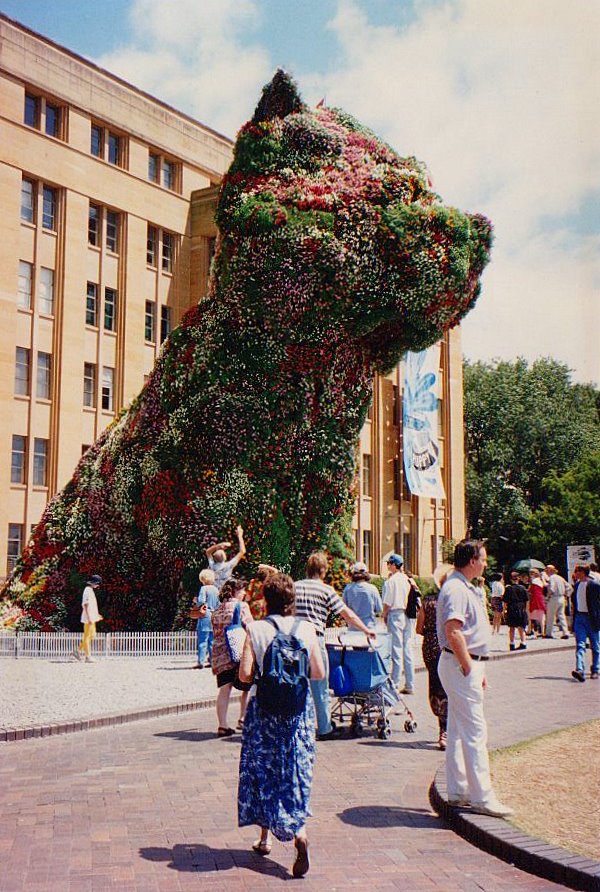The Dictionary of Sydney was archived in 2021.
Museum of Contemporary Art
Citation
Persistent URL for this entry
To cite this entry in text
To cite this entry in a Wikipedia footnote citation
To cite this entry as a Wikipedia External link
Museum of Contemporary Art
The Museum of Contemporary Art occupies a large, six-storey Art Deco-style building on the western side of Circular Quay, formerly the headquarters of the Maritime Services Board. It was built on the site of the former Commissariat and Ordnance Stores, on the western shores of Sydney Cove.
Commissariat stores
[media]The Commissariat Store was a large sandstone structure built under instruction from Governor Lachlan Macquarie in 1812, from a plan prepared by Lieutenant-Colonel Joseph Foveaux in 1809. Another sandstone building of similar scale on the George Street frontage was also used by the Commissariat Department. Together, these buildings were known as the Commissariat and Ordnance Stores.
The Commissariat Stores were used to store and supply provisions to the inhabitants of the early penal colony. As the population of the settlement grew in the nineteenth century, so did the functions of the Commissariat Department. By the late 1830s, the Ordinance Department took over some of the functions of the Commissariat Stores, supplying the military with stores and provisions. Although the convict transportation system to NSW officially ceased in the 1840s, the Commissary and Ordnance Departments retained control of convict establishments in the colony until 1855, and supplied British military forces until they were withdrawn from Australia in 1870.
[media]The western side of Sydney Cove was an important site for the shipping and seafaring trades in the nineteenth century. Until the reclamation of Circular Quay from the late 1830s to the 1850s, there was no wharfage at Sydney Cove where ships could be berthed. Instead, commercial trading ships had to anchor off the Cove and load cargo into boats before it was landed at the government wharves and dockyards.
In the early twentieth century, the former Commissariat and Ordnance Stores were used to house various government departments, as well as commercial offices.
Plans to demolish a number of Macquarie-era buildings in the late 1930s, including the Commissariat Stores and Hyde Park Barracks, mobilised the nascent heritage movement. Threats to both buildings provoked heated debates in the Sydney Morning Herald, and eventually contributed to the formation of the National Trust in 1945. Despite public protests, the state government won the day and the Commissariat and Ordnance Stores were demolished in 1939. The hand-hewn sandstone blocks used to build them were reused elsewhere in The Rocks.
Maritime Services Board
[media]In the same year, William Henry Withers, an architect with the Maritime Services Board, designed a building for the organisation's headquarters on the site. However, work on the building was suspended in 1940, due to wartime shortages of construction materials and labour. The site remained empty until late 1944, when work began again. The solid and imposing six-storey building was constructed using a steel frame encased with concrete. Australian stone and timber were used throughout, although largely for decorative purposes. The external brick walls, for example, were clad with sandstone quarried at Maroubra, and the entrance was red Rob Roy granite.
The Maritime Services Board headquarters was officially opened in 1952. The building was used as offices until 1989, when the board was renamed the Sydney Ports Authority and moved to larger premises. The building it had occupied was given to the Museum of Contemporary Art by the state government.
Museum of Contemporary Art
[media]The Museum of Contemporary art was based on a collection founded in the 1940s by John Power, an artist and art collector. Known as the Power collection or Power bequest, it was maintained and added to at the University of Sydney from the 1960s to the late 1980s.
In 1990, the former Maritime Services Board headquarters was refurbished for use as an art gallery. In order to open up the space for the display of art works, a number of internal walls which had been necessary for the building's use as office accommodation were removed.
Some original interior elements were retained, most notably the distinctive two-storey lobby at the Circular Quay entrance, known as the Wharfage Hall, which features marble sculptures by Lyndon Dadswell.
[media]The Power collection was moved to its new home after refurbishment, and the Museum of Contemporary Art was opened in November 1991. It continues to operate as Sydney's pre-eminent contemporary art museum, despite threats to demolish or alter the landmark building in the early 2000s.
References
Edna Carew, First Port, Future Port: Celebrating 100 Years, Sydney Ports Corporation, Sydney, 2002
Department of Public Works, 'The Maritime Services Board building, Circular Quay, Sydney: Conservation Study', NSW Department of Public Works, unpublished report, 1985
http://www.mca.com.au







